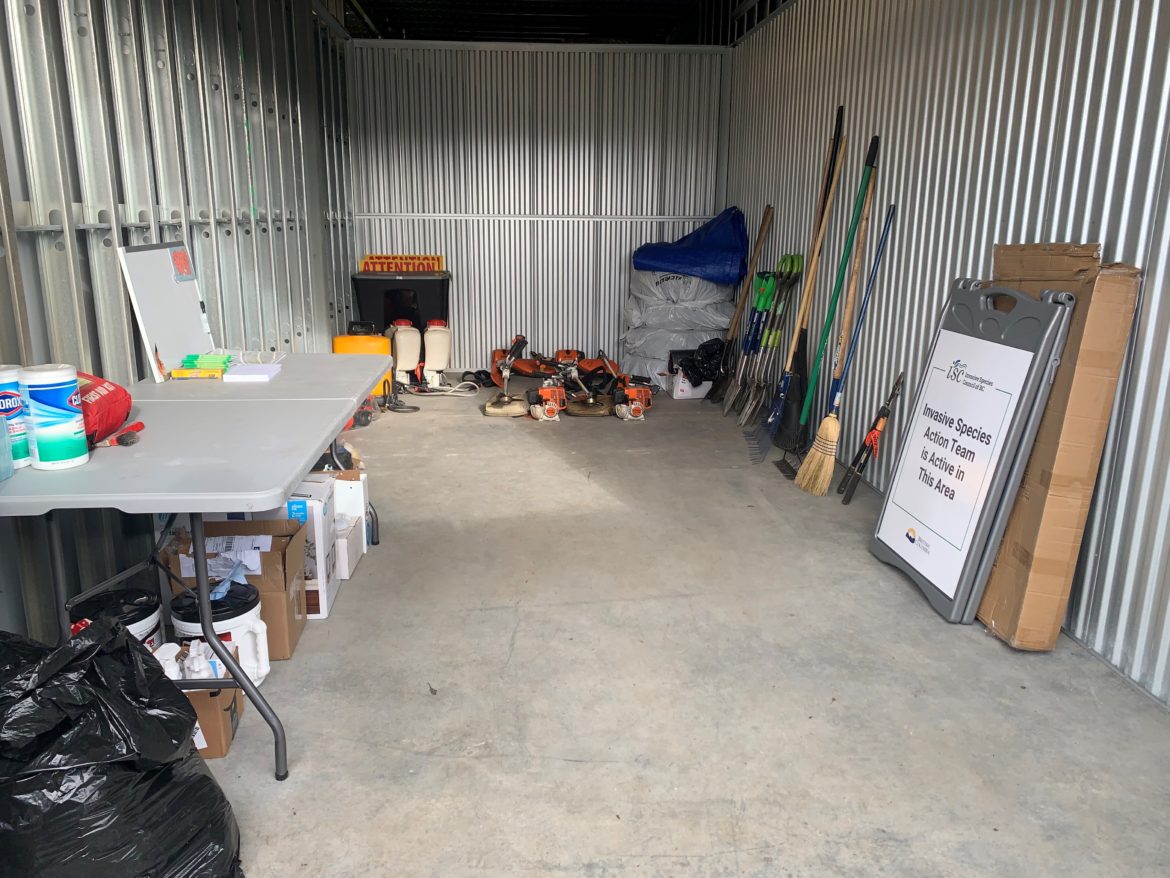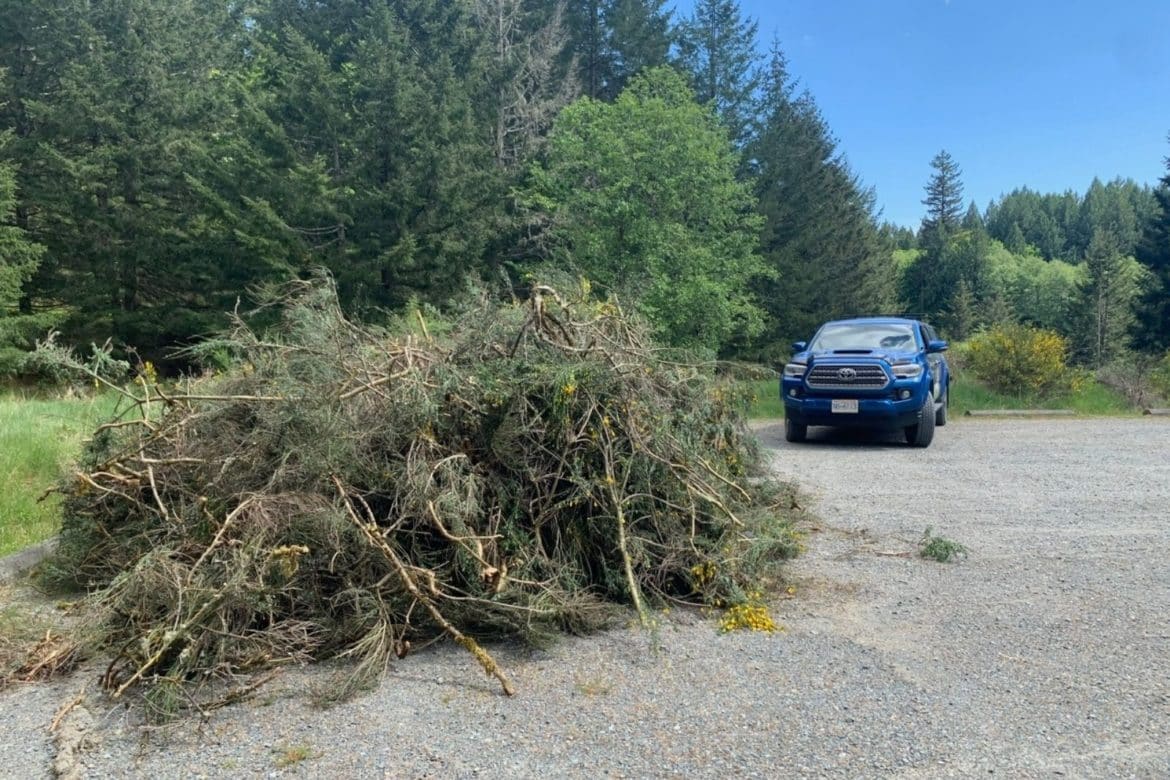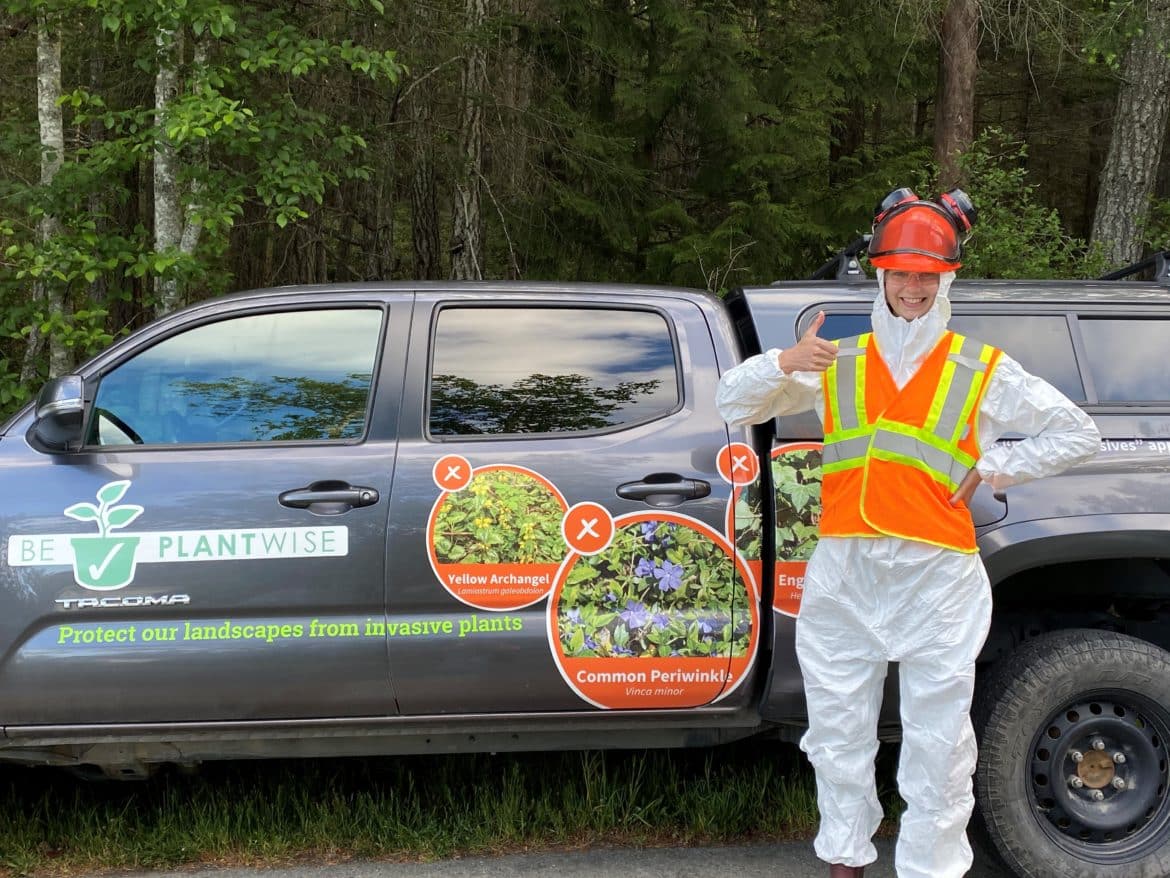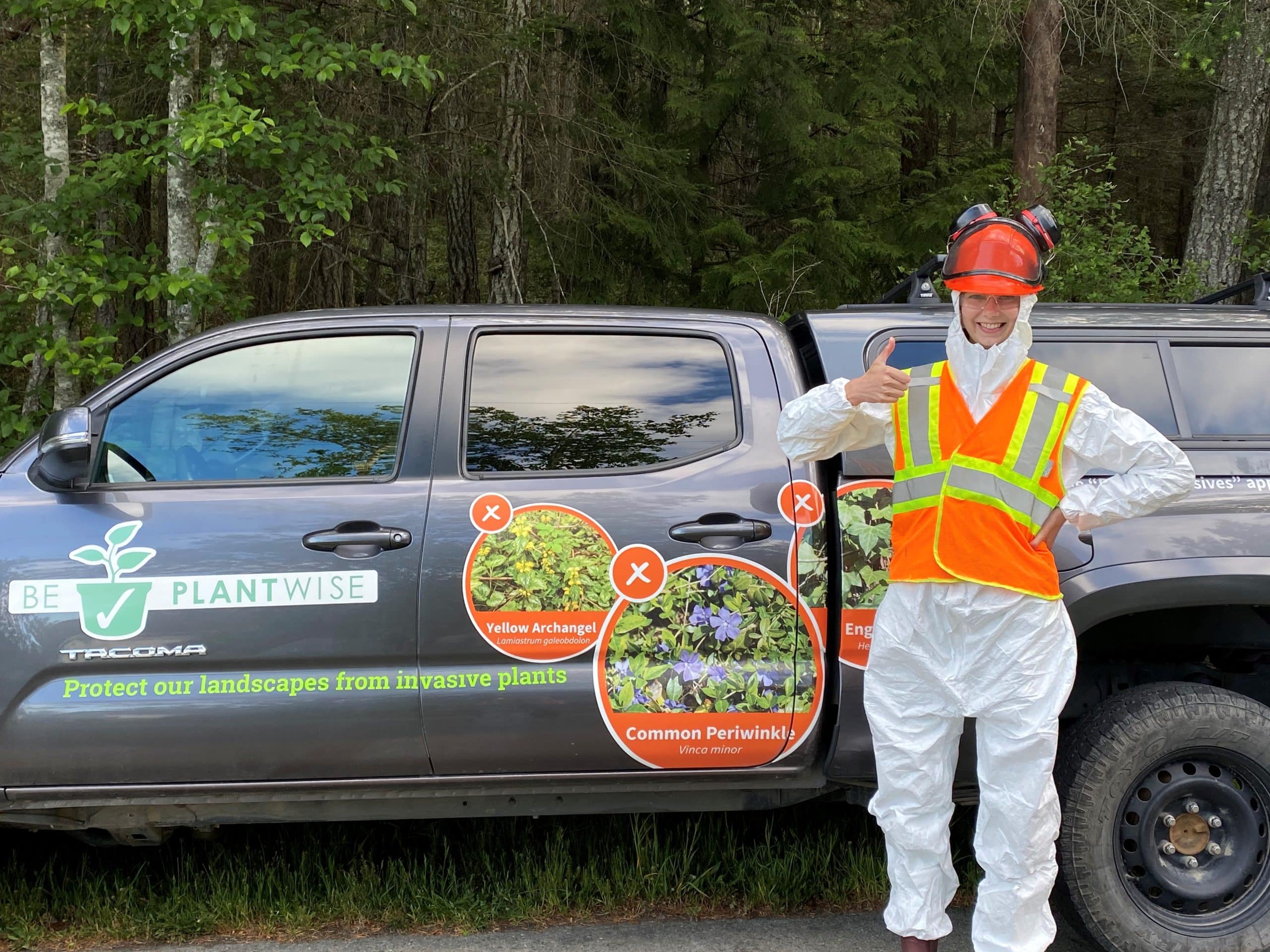Published March 31, 2022
Author: Cassidy Patton, ISCBC Action Team member
As part of the Stronger BC initiative, the ISCBC received $8 million in funding to create a job training program and control invasive species across the province. These 14 “Action Teams” spent the 2021 field season controlling invasive species, while developing field skills such as conducting site surveys, identifying native and invasive species, operating power tools and engaging with members of the public.
I worked as an Action Team member for 6 months, and I enjoyed every second of it! Although some days can be challenging, each new site we visited offered gorgeous views, interesting native species, and good comradery. In this blog, I will take you through an average day in the life of the ISCBC’s Action Teams.
Monday
On Monday morning, the team will meet at their muster point. Once the team is all checked in, the supervisors will go over their workplan for the week, which includes the site locations and the species to be removed. After packing up the truck with the required tools for the day, the crew will hit the road and head to their site.
After arriving at the site, the team will assess the restoration area and identify any hazards that may be present. The supervisor and crew will work together to conduct a site survey by: recording their UTM coordinates, assessing if there are any threatened/endangered native species on site, identifying which invasive species are present and determining their density and distribution. Finally, it is time to start tackling the invasives!

At the end of the day, the Action Team will record the mechanical and/or chemical treatment record with the description of the invasive species that were removed, and the number of hectares treated. After cleaning up the site and properly disposing of the invasives, the teams will head back to their muster point to check out for the day.

Tuesday, Wednesday and Thursday
Repeat! This same routine is repeated for the rest of the week. If there is a large infestation of an invasive species, the Action Teams may remain at the same site for several days in a row to ensure an effective treatment. Other weeks, the Action Teams may travel to a few different locations in a single day.
Friday

This year, Fridays were dedicated to online training and professional development. The Action Teams participated in online courses, webinars, and certification programs such as Bear Aware, WHMIS, Occupational First Aid, Indigenous Cultural Awareness and Pesticide Applicator Certification.

Overview
In total, the Action Teams removed 67 invasive plant species across the province! These efforts to control invasive species will have positive impacts on their communities by restoring green spaces, increasing native biodiversity, and encouraging local participation in the fight against invasives. Working on the Action Teams provided me with invaluable field training and professional development that I will use throughout my career. I look forward to next season!
Work with ISCBC!
Want to protect BC’s biodiversity and native species? Love working outdoors and being part of a team? We want you! ISCBC is hiring Invasive Species Action Team Members across BC.
Share





